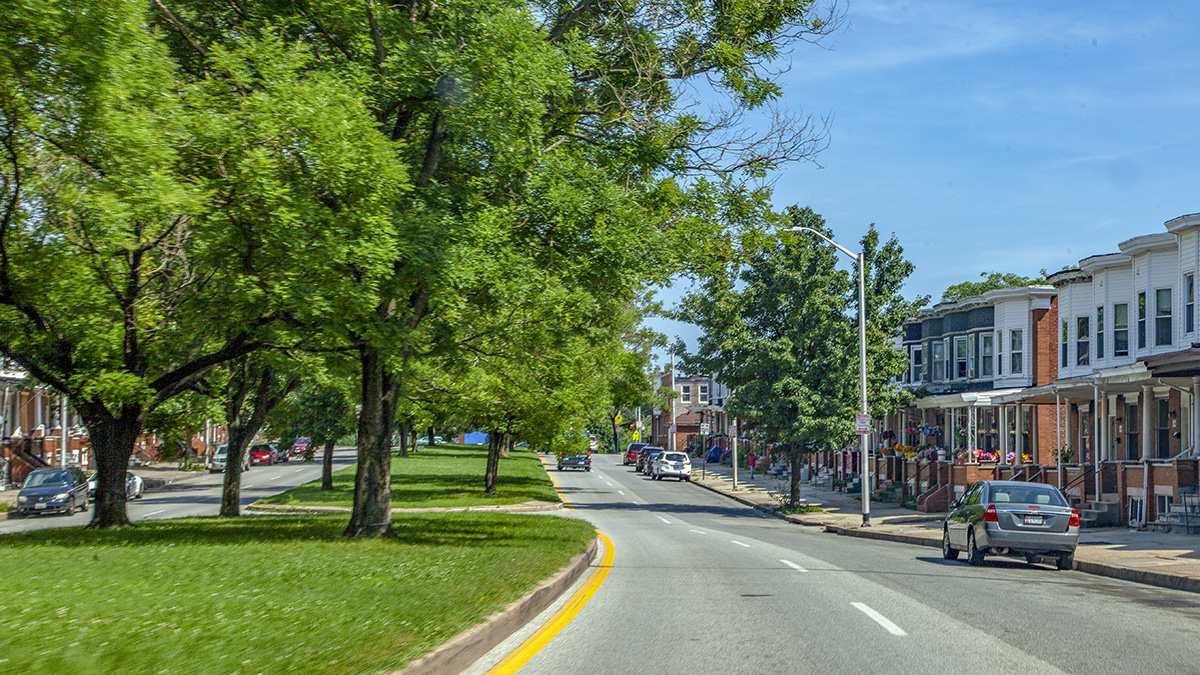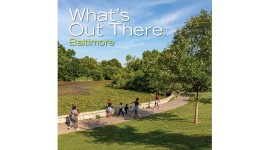Landscape Information
In its comprehensive plan for Baltimore published in 1904, the Olmsted Brothers firm recommended the creation of several parkways along what was then the city’s outskirts. The parkways were to serve as linear extensions of Baltimore’s large public parks. Specific plans for this parkway were laid as early as 1906, but construction began in 1911, with the work fully complete by 1916. The Alameda was built in conjunction with what was then called the 33rd Street Boulevard (now referred to simply as 33rd Street), another parkway envisioned by Olmsted Brothers. Unlike that parkway, which adheres strictly to the city’s orthogonal street grid, the Alameda proceeds from its junction with 33rd Street in a gentle S-curve that winds south to Clifton Park. The parkway comprises a central, grassy median flanked on either side by a two-lane roadway bounded by sidewalks. The median is planted with large canopy trees, including zelkovas, elms, and maples. Along its original course, which traverses some ten city blocks, the parkway passes by row houses, most slightly elevated above street-level with front porches reached by stairways. In the mid-twentieth century, the Alameda was extended much farther north, eventually reaching Baltimore’s Idlewood neighborhood, its planted median reaching only as far as East 43rd Street.













